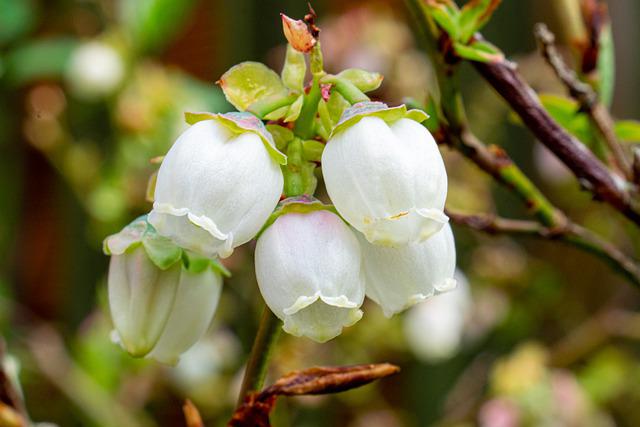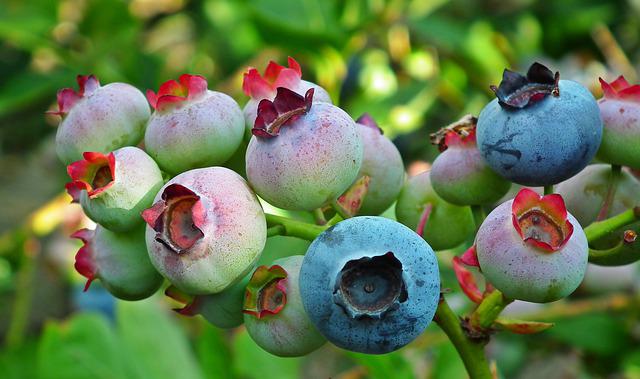Fertilizing Blueberry Bushes

If you’re like most gardeners, you’re probably concerned about how to fertilize your blueberry bushes. After all, they’re a heavy feeder, and you don’t want them to get too big or gangly. Here are some tips on how to fertilize blueberry bushes in the right way to thrive and produce abundant fruit.
Table of Contents
Tips in Fertilizing
Fertilize at the Appropriate Time
The best time is in the spring before the leaves begin to grow. For optimal results, apply in early spring and again in late spring.
It doesn’t matter if you’re fertilizing to raise the pH of the soil, add nutrients, or do both; you can fertilize your blueberry bushes in the spring or fall. A spring and an autumn split is another option: apply half of your treatment and let it sit until the following year.
It’s best to fertilize blueberries in the spring before the buds start to swell, but if you forget or are running late, it won’t hurt anything. Remember that soil microbes need time to process organic fertilizers and elemental sulfur before doing their work and putting them to use. If you want a long-term solution, you’re not looking for a quick fix. If you decide to use blueberry fertilizer in the fall, you should do so about four weeks before the first expected frost date. While it’s important to use the right fertilizer to avoid burning tender roots, timing isn’t critical when using a long-acting organic fertilizer. Regular fertilization and pH checks every four to five years are the most important aspects of maintaining healthy soil.
- First Year
It is not necessary to fertilize right after planting. Then, when the first true leaves appear, sprinkle a tablespoon of an all-purpose azalea fertilizer (12 inches away from each plant), such as a 10-5-4, 10-8-8, or 11-7- 7. In the Sandhills and Coastal Plain, repeat every six weeks until mid-August. In Piedmont, repeat every month until mid-July. If phosphorus levels are high, use a half-tablespoon of ammonium sulfate rather than a complete fertilizer for the second and subsequent applications.
- Second Year
Double the first year’s rates, but widen the circle around the plants by 18 inches. During the spring, apply the first coat of weed killer.
Fertilizers with iron and sulfur are preferable for blueberries, such as azalea food or organic plant food, once they’ve established themselves. Take care not to over-fertilize your blueberry plants, as they are extremely vulnerable to over-application. Follow the directions on the label.
Spreading fertilizer around the drip line and under the drip line is preferable to fertilizing twice a year in early spring and late spring (the perimeter of the branches). Feeder roots will be concentrated in the most concentrated form here. Plants can be damaged by using manure. Before you apply any fertilizer, make sure you thoroughly soak the soil.
Base fertilizer application amount on bush size begins in the third season. Application rates should be adhered to, and fertilizer spread evenly under and around shrubs.
Conduct a Soil Test
Blueberry plants need soil with a pH between 4.8 and 5.2, which is highly acidic. Before planting in a garden, it’s best practice to test soil pH and make any necessary adjustments to correct it if it falls outside the normal range of 6.0–7.0. Your blueberries won’t thrive and bear fruit if your soil is too alkaline.
To measure soil acidity or alkalinity, soil pH uses a scale of 1-14, with 7 being the neutral point. Measurements lower than 7 indicate acidic or higher than 7 indicate alkaline conditions.
You should test the pH of your soil if you’re unsure of the pH of your soil or if it’s suitable for growing blueberry plants. With a simple soil pH tester probe, you can quickly determine the soil’s pH level. To raise the pH (alkalinity) of the soil, pelletized limestone can be added. These include Soil Sulfur and Aluminum Sulfate, as well as Chelated Iron. When planting, adding organic compost to the soil can help raise the pH level and keep it there.
Choose a Fertilizer That Is Suitable for Blueberries
This plant prefers acid fertilizers such as those made for rhododendron or azalea. Select a nitrogen-rich fertilizer. However, the fertilizer must not contain calcium nitrate or chloride, as these compounds are toxic to some blueberry plants. Ammonium nitrate, ammonium sulfate, or sulfur-coated urea should be included in the fertilizer. These ingredients maintain a lower pH and a higher acid level.
Apply two tablespoons of 10-20-10 (or a similar fertilizer) to newly planted stock in late spring or once the plants are established. Take care! Blueberries are extremely susceptible to excessive fertilization. Use 1 ounce of fertilizer per year following planting, up to 8 ounces per plant in subsequent years.
Blood meal and cottonseed meal are excellent organic fertilizers. Alternatively, you can use the following:
- For nitrogen, use a fish meal or bone and blood meal.
- Potassium and phosphorous can be supplemented with bone meal and powdered seaweed.
- Acidity can be increased by adding coffee grounds or sphagnum peat.
- Prevent the use of fresh manure.
Water Thoroughly
Blueberries depend on adequate water to thrive. Always thoroughly water after fertilizing. Always check the soil moisture first before watering blueberries for it not to be over-watered and cause root rot. Water deeply, at a rate of about an inch per week, but no more than once every two weeks unless your plants grow unusually quickly. Then you may need less frequent irrigation. Watering is usually necessary when temperatures exceed 60 °F (15 °C).
Make Sure the Blueberry Plant Doesn’t Lack Iron or Magnesium
If the leaves are red to yellow, this indicates a magnesium deficiency, while yellow leaves with green veins indicate a possible iron deficiency. The fertilizer should contain one or both of these nutrients, depending on the application.
Precautions Must Be Exercised
Inadequate amounts of fertilizer can quickly ruin a blueberry crop. Follow the manufacturer’s recommendations and wait for four inches between applications for the best results.
Bearing Facilities
A complete fertilizer like Azalea fertilizer can be applied when growth begins in the spring. Spread 1 cup of this fertilizer out in a circle 3 feet in diameter around each plant. Fertilize with a quarter-cup of ammonium sulfate at six-week intervals as a side-dress for more vigorous growth. However, fertilization should be discontinued after July 1. Six to twelve inches of new growth per year is sufficient for mature bushes. To keep the plants from becoming too large and decreasing their yield, pruning is necessary. Based on the amount of new growth and the color of the leaves, decide how much side-dressing is needed.

